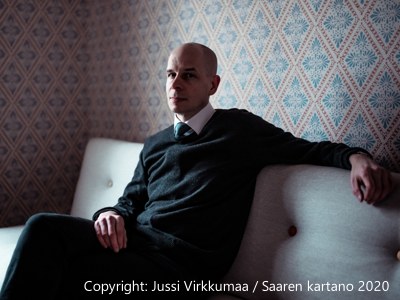Instrumentation: 2 Fl (2.+Picc) 2 Ob (2.+Ob da caccia) Bs 2 Hr Hpscd (Lute ad lib.) Strings 4-4-2-2-1
Publisher: Schott Music
Duration: ca. 14 minutes
FP: Lucerne Festival, 27.8.2005 (Freiburger Barockorchester)
Further performances:
03.09.2005, Erlangen (German Premiere)
05.09.2005, Berlin, Philharmonie (Berliner Festspiele)
16.10.2005, Dortmund (Konzerthaus)
18.11.2005, Huddersfield Festival (English Premiere)
Radio broadcasts: a.o. Hessischer Rundfunk, YLE Finland
CD: Harmonia Mundi France („about baroque“)
Commissioned by the Siemens Arts Program and the Freiburger Barockorchester for the project ABOUT BAROQUE – An initiative of the Siemens Arts Program in Cooperation with the Freiburger Barockorchester and the Lucerne Festival
Introduction:
Der flekkichte Oktober
hat alles bundt vermahlt /
mit Oepffeln auß Zinober
die reiffe Ceres brahlt.
Sylvan füllt seine Schläuche /
Mercur mängt Pflaumen-Brey /
schon schallt durch Pusch und Sträuche
Dianens Jagd-Geschrey
Arno Holz, from: Dafnis (1904)
flekkicht is a baroque piece in the original sense of the word: manifold, at times declamatory, squiggly, partly whimsical, swaying between sensual power and despondence.
In this way, the score also reflects the complex thoughts I had during the work on this project for a baroque orchestra. From the very beginning, it was clear to me that I could not just transfer my current musical language and compositional technique on the „historic“ instruments. The difficulties already start at the questions of coordination: a contemporary composer would hardly ever think of writing a piece for an orchestra of about twenty players without conductor. The potentials of the instruments are different to modern ones – partly reduced, partly extended –, many standard contemporary techniques cannot be produced on them. Above all, the instruments have been developed and used for totally different music, and the players are used to deal differently with a score than conventional orchestra musicians or ensembles specialised on contemporary music.
Therefore, the compositional process was interfered by thinking about today’s practice in performing 16th and 17th century music: the art of detecting articulation, timbre and dynamics from few and often contradictory clues, the necessarity and ability to complement, develop and variegate the notation, the courage and challenge to get into adventurous, present-day interpretations and at the same time feeling as „historical“ as it is possible, taking into considerance the knowledge about aesthetics and performance practice of baroque music.
flekkicht demands from the musicians to deal accordingly active and interfering with the score. Especially instructions on „secondary“ parameters like dynamics, articulation, timbre, which are often written out extremely accurate in contemporary music, have deliberately been set aside. Practices of older music – like partly composing all bass instruments as continuo group sharing one part – and licences in execution of e.g. ornaments, dotted notes, etc., pervade the piece thoroughly.
The dramaturgy of the composition is, considerably more than usually in my music, characterized by clear cuts between sections that each carry one distinguishing „affect“. The piece starts with a harpsichord solo that picks up the fascination of freely notated 16th-century harpsichord music and also conveys this partly to the orchestra, whose sparing entries are prolonguing certain notes of the harpsichord part. Into this intimate situation crashes a gruffy section of plain and simple character that, however, soon melts into intricately overlapping structures. The following, central piece (with the quirky subtitle “La Sarabande enterrée”) with solos by oboe and violin is again notated more feely. From the reduced instrumentation of its solistic sections emerges a dancing-like, light Intermezzo. The final section returns, with the scheme of a French Ouverture in the background, to more motoric textures, which however soon make way for a finely hushing conclusion.
